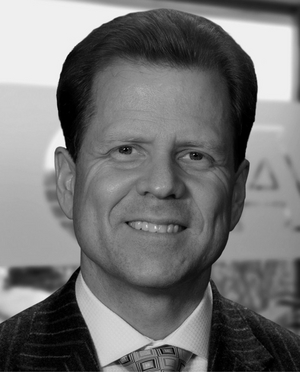A reoccurring concern throughout much of the developed world is the growing gap between the rich and poor, the so-called 1% versus the 99%. While many "solutions" are proffered, almost all ignore the two most important economic contributors to this growing disparity.
The source of this disparity is certainly not risk-taking capitalism. Competition amongst market participants, which delivers to customers the products and services they want at the most cost-effective prices, benefits everyone. How can self-sacrificing business people focused on the long term be anything but a boon to the economy, and to the pocket books of all productive citizens? No, the disparity is not caused by the savers and investors in our economy, the ones who create and provide the real capital and the long-term wealth creation.
Rather, the problem has little to do with competitive market forces, and everything to do with (1) the massive and overbearing position of the state in the economy, and (2) the inexorable expansion of credit/debt by the central banking elites.
The expansion of the state throughout developed economies is one of the key drivers of wealth inequalities. The so-called fight against poverty, which helped justify the massive expansion of the state, has in fact achieved the exact opposite aim. State intrusion has escalated poverty by creating social welfare schemes that fail to incentivize productivity, and can only be funded by stripping the productive class. Remember, socialism impoverishes, since it is a net consumer of capital. It is the de-capitalization of the economy.
How can wealth inequalities not increase when the state bureaucratically and inefficiently directs over 40% of the economy, with little to no competition or accountability to the bottom line? How can wealth inequalities not mount when the state continues to pillage from the future to pay for excesses today? How can wealth inequalities not grow when the state refuses to accept the truth? We have reached a point in economic history when the scale and magnitude of the debt problem—brought on by lies of "free" education, pensions, and medical care, from here till eternity—can not be paid for, apart from the printing press.
This leads to the second economic source of the growing disparity between the rich and poor: the uncontrolled expansion of the money supply over the past several decades. This, as Mark Spitznagel recently pointed out in the Wall Street Journal, "creates artificial disparities based on political privilege and economic power." History teaches us that in many cases, large governments are not fundable without the eventual debasement or counterfeiting of money. But an increase in money supply is beneficial to those who get it first, and detrimental to those who receive it last. Monetary inflation is a process; it is not static. It is analogous to counterfeiting, which benefits those that can spend the money immediately while forcing higher prices on those who get the money later.
Central banks do not expand money supply by equally dropping cash from helicopters over the eager population. Rather, they direct their digital "capital transfers" to the largest banks, providing them with the cheap money first which minimizes their borrowing costs. This in turn allows banks to unload this "new money" into the market, raising the prices of what ever it touches.
In the end, central banks transfer immense wealth from the middle class to the most affluent, from the least privileged to the most privileged. Those who can get their hands on the money early in the cycle and own the most productive assets in the economy can generally build a hedge to the debasement of money.
If we are serious about minimizing wealth inequalities we must start by slashing the size of the state, collateralizing our money, and rewarding the productive class by allowing them to build up the necessary capital to underpin our economy.



